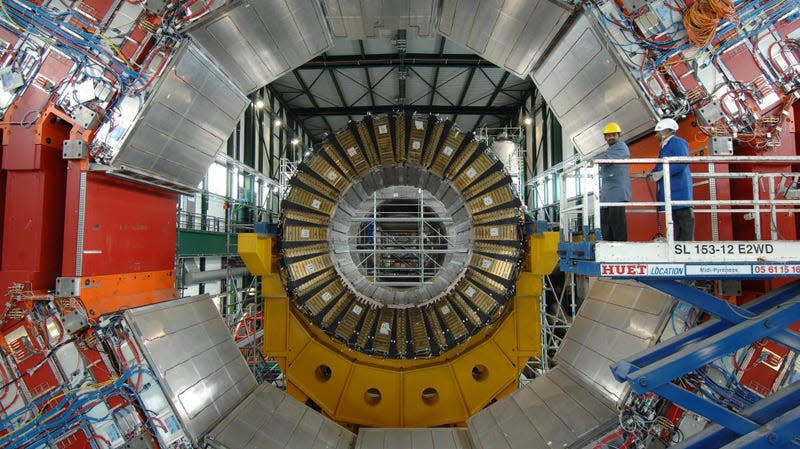Physicists Hunt Dark Photons as Large Hadron Collider Gets More Powerful

Scientists working on CERN’s Compact Muon Solenoid (CMS) experiment have published the latest data in their search for a long-lived exotic particle known as the dark photon.
Dark photons (also called hidden photons) differ from regular photons—particles of light—in that they are thought to have mass, making them a prime candidate to explain dark matter. Dark matter is the catchall term to describe seemingly invisible stuff in space that has only been observed via its gravitational effects, but it has never been directly detected, and no one is sure what it actually is.
Read more
“We have really improved our ability to trigger on displaced muons,” said Juliette Alimena from the CMS experiment in a statement. “This allows us to collect much more events than before with muons that are displaced from the collision point by distances from a few hundred micrometers to several meters. Thanks to these improvements, if dark photons exist, CMS is now much more likely to find them.”
Dark photons are considered long-lived, by particle standards: they exist for a tenth of a billionth of a second. Despite their longevity, they are difficult to spot—which is why no one has done so yet. In fact, the search for dark photons has been going on for years. “Dark photon searches are simultaneously straightforward and challenging,” physicist James Beacham told Gizmodo in 2018. “Straightforward because the concept is general and simple enough that designing experimental searches is pretty easy, but challenging because we really have no clue where in the parameter space the dark photon could live.”
Some scientists are looking for dark matter using little mirrors, while others are trying to tune into its frequency with a “dark matter radio.” At CMS, physicists are trying to spot the particles as they decay into muon pairs.
In a boost for CMS, the Large Hadron Collider will soon be upgraded. The upcoming High Luminosity-LHC will increase the luminosity of the facility by a factor of 10 and increase number of Higgs bosons physicists have to study by an order of magnitude. The HL-LHC is expected to be ready for operation by 2029. In the meantime, the LHC’s Run 3 will continue through 2026.
Data from the collider keeps yielding new subatomic particles to interrogate, but some—those presumed responsible for the universe’s dark matter—remain elusive. At least for now.
More: 10 Years After the Higgs Boson, What’s the Next Big Thing for Physics?
More from Gizmodo
2023's best Blu-ray and 4K UHD box sets: John Wick, Star Trek: Picard, Jurassic World, and more
R.I.P. Tom Wilkinson, from The Full Monty and In The Bedroom
I love it when Dan Campbell gets that crazy look in his eyes
College football team gains access to videos — and it's not Michigan
Sign up for Gizmodo's Newsletter. For the latest news, Facebook, Twitter and Instagram.

